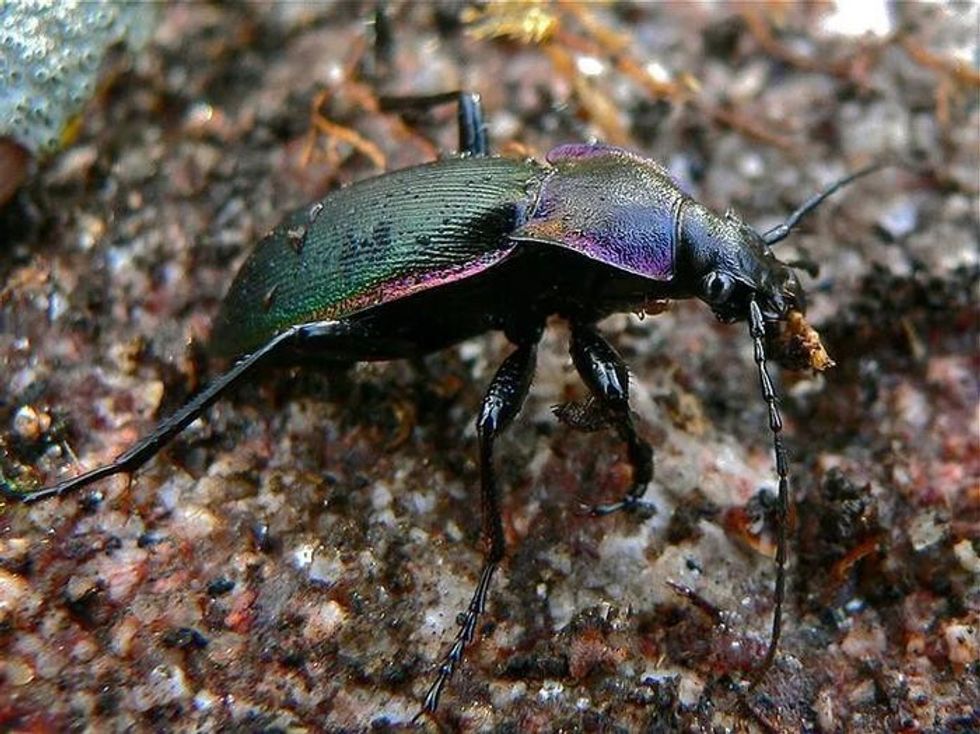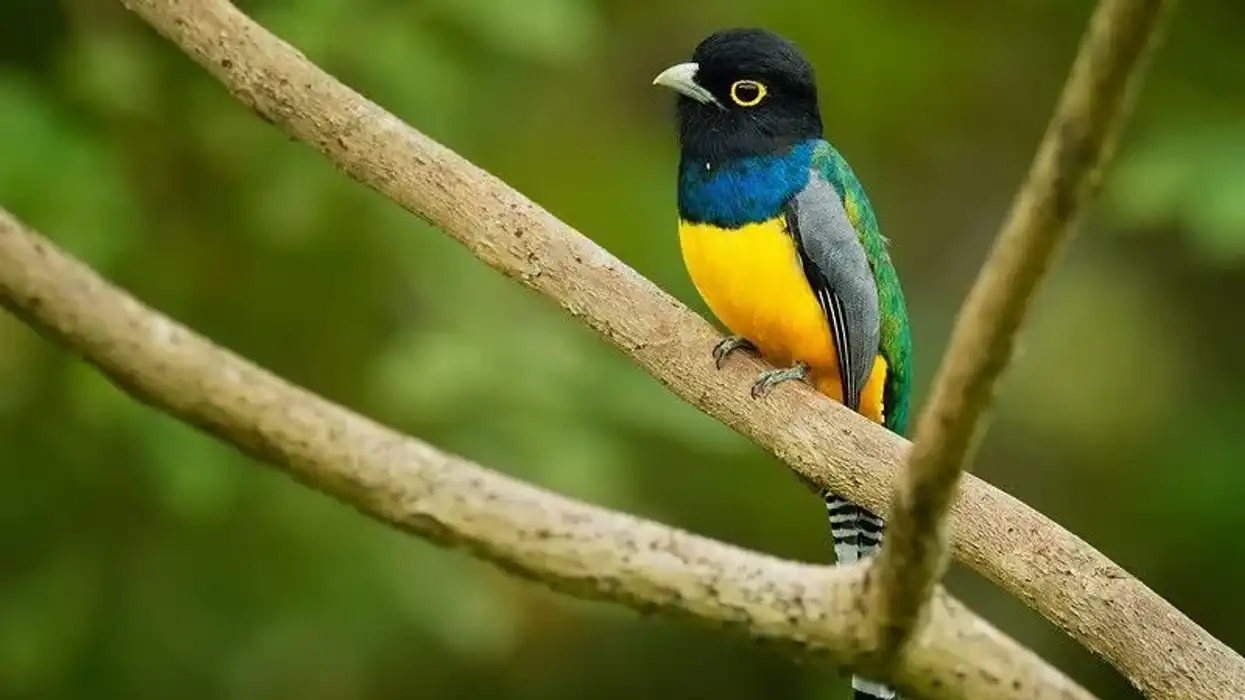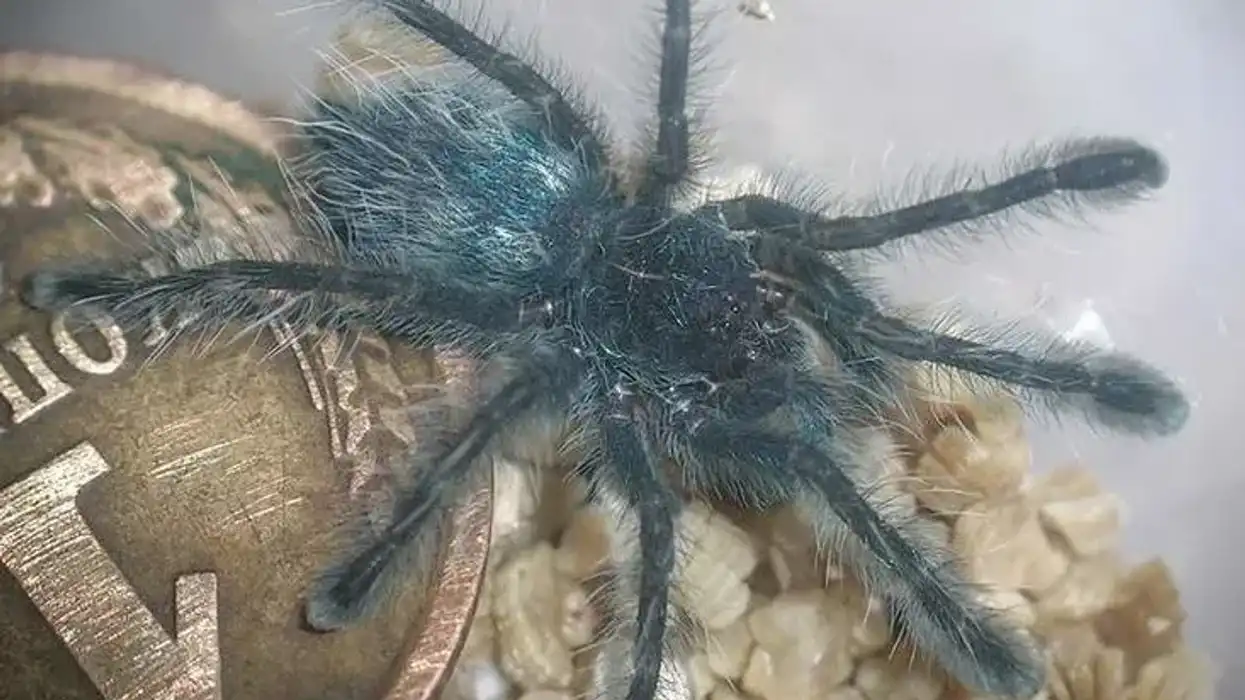Violet ground beetles belong to the family of Carabidae and genus Carabus. They are predators of worms, slugs, insects, and snails.
These beetles prefer to live in green environments like gardens, parks, and forests. This is a species of insect that is nocturnal. This means that they are active during the night.
During the daytime, they can be found under logs and leaf litters in these gardens and parks only. They have a smooth body and a black thorax.
Their larvae depend on them for basic sustenance for a few days after which they become strong predators on their own. This species is most commonly confused with the Carabus problematicus but there are certain subtle physical features that can help to tell them apart.
The common misconception while reading this article can be that violet ground beetles are agricultural pests. They are completely opposite and are actually a great help to human beings. Their eggs can contain around 300 larvae.
The juvenile ground beetles are not healthy enough to roam around so they prefer to lay on the ground. Read on to learn more about their habitat, feeding habit,s and reproduction pattern amongst other things.
If you want to learn more about insects and animals and enjoy reading our articles, you can read our water beetle and Asian Lady beetle facts.
Violet Ground Beetle Interesting Facts
What type of animal is a violet ground beetle?
The Carabus violaceus is an insect that belongs to the family of Carabidae. They are carnivorous and prey on worms, slugs, snails, and wevils. They are a part of the kingdom of Animalia and genus Carabus. The violet ground beetles are a nocturnal species of insect that stay beneath logs and grass during the day to protect themselves.
What class of animal does a violet ground beetle belong to?
The violet ground beetle belongs to the class of arthropod animals. Violet ground beetles are also referred to as rain beetles. This species of beetles also belong to the family of Caribus which is also nocturnal. The violet ground beetle is one of the largest species of ground beetles found in the United Kingdom.
How many violet ground beetles are there in the world?
There are plenty of violet ground beetles across Europe and Japan. Although we do not have a specific number on their total population, they are everywhere!
Where does a violet ground beetle live?
The Carabus violaceus lives in gardens, parks, and forests under stones and logs. They live in Europe and Japan mostly.
What is a violet ground beetle's habitat?
There are two species of violet ground beetles. The Carabus violaceus is found in wetlands, forests, parks, and gardens. Carabus problematicus are not as common and they are found in woodlands and heathlands. They can sometimes also be found in gardens.
Who do violet ground beetles live with?
Violet ground beetles live with their own species.
How long does a violet ground beetle live?
A violet ground beetle lives up to three to four years.
How do they reproduce?
Violet ground beetles (Carabus violaceus) lay eggs in the soil or where there is an accumulated organic matter. The larvae have elongated and relatively soft-bodied grubs. Juvenile violet ground beetles have three pairs of legs near the head end. They are relatively less active and prefer to lay on the ground. However, they learn quickly to become prey.
What is their conservation status?
The Carabus violaceus is recognized by the ICUN as an animal of Least Concern. They are found in abundant numbers across Japan and Europe.
Violet Ground Beetle Fun Facts
What do violet ground beetles look like?
Violet ground beetles like their namesake have a metallic-purple sheen on their body. Their body is shiny black in color. They have flattened edges along with their fused wing cases and the thorax.
It is sometimes confused with the Carabus problematica. These ground beetles have relatively a more textured look with distinct ridges and dimples. The Carabus violaceus has an elongated and oval body with three pairs of legs.
How cute are they?
Ground beetles are generally not regarded as beautiful creatures. However, they do have a shiny exterior so they might be considered beautiful.
How do they communicate?
We do not know enough to provide detailed information on their method of communication. A violet ground beetle communicates through sound and chemicals such as pheromones. This species of ground beetle also communicates with the aid of sight.
How big is a violet ground beetle?
A violet ground beetle is 1.1 in (3 cm) in length which makes it three times the size of a ladybug.
How fast can a violet ground beetle fly?
This species of insects are unable to fly. They do have wing cases which might give a faux appearance of them being able to fly but that is not true.
How much does a violet ground beetle weigh?
The weight of a violet ground beetle is not known.
What are the male and female names of the species?
Male and female beetles are not referred to by any specific names. They both are called violet ground beetles.
What would you call a baby violet ground beetle?
A baby violet ground beetle goes through three stages of development until transforming into a well-grown adult. The first stage is larvae when they have just hatched from the egg, the second is pupae and then they grow into an adult beetle. A baby violet ground beetle can be called larvae or pupae.
What do they eat?
This species of beetles prey on slugs, worms, insects, and snails. They are a species of carnivorous insects. The larvae of a ground beetle are also carnivorous. They also feed on worms, snails, smaller insects, and slugs.
Are they poisonous?
Violet ground beetles are not poisonous insects. They are not found to be violent creatures and actually are very helpful to human beings. Their eating habits and natural habitat all contribute to them helping farmers out in eliminating agricultural pests.
They are predators so they use their hunter skills to catch their prey. Adults have the task of finding and eating food. They have absolutely no poison in them which could potentially harm human beings.
Would they make a good pet?
You might have seen a ground beetle under leaf litters and logs in gardens and parks. These insects do very well in green surroundings with the caveat that they can find their own prey.
Violet ground beetles are very beneficial in the elimination of agricultural pests. Worms, insects, snails, and slugs are all agricultural pests that destroy farms and are the cause of great concern for farmers and people who grow plants in their gardens.
Due to the eating habit and natural habitat of these insects, they serve as great pesticides. So if these conditions are fulfilled, by all means, they can be kept as a pet.
Did you know...
Most people confuse the Carabus violaceus with the Carabus problematicus. The former has smooth oval wing cases with an elongated black body. The latter species have more ridges and dimples on their body compared to Carabus violaceus.
This species of ground beetles are widespread and are not endemic. This means that their presence is not limited to a specific place. We also know that they hibernate during the cold season and come up during the summer season.
Are ground beetles harmful to humans?
Ground beetles are very helpful in removing agricultural pests. We know that they are predators of slugs, worms, snails, and other smaller insects all of which are pests.
The natural habitat of a ground beetle includes gardens, parks, and forests. Therefore, they are more beneficial to human beings than you can imagine. In short, they are not harmful to humans.
Is the violet ground beetle nocturnal?
Violet ground beetles are nocturnal and are commonly found under logs and green leaf litters at gardens and parks during the daytime. They come out during the night to gather food for themselves and their larvae.
This responsibility largely falls on the shoulders of adult beetles who use their skills as hunters to catch their prey. They protect themselves during the day by covering themselves under logs and leaf litters.
Here at Kidadl, we have carefully created lots of interesting family-friendly animal facts for everyone to discover! Learn more about some other arthropods from our bark scorpion fun facts and deathstalker scorpion interesting facts for kids pages.
You can even occupy yourself at home by coloring in one of our free printable arthropods coloring pages.
Second image by Bernard DUPONT.









